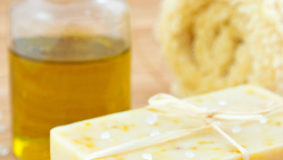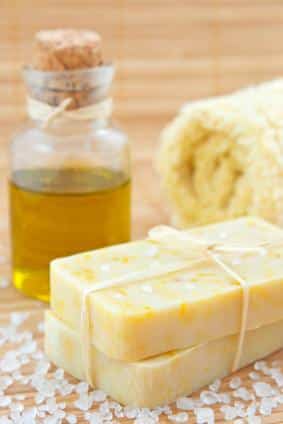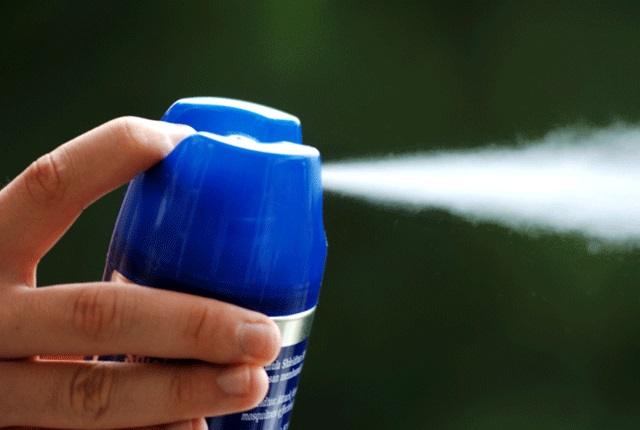 A few years ago, tired of the cost and potential environmental hazards of commercial laundry soap, I started making my own detergent from washing soda, borax, and Fels-Naptha bars. It wasn’t long before I started wondering about making soap from scratch.
A few years ago, tired of the cost and potential environmental hazards of commercial laundry soap, I started making my own detergent from washing soda, borax, and Fels-Naptha bars. It wasn’t long before I started wondering about making soap from scratch.
I was a little intimidated by the prospect, remembering my grandmother’s harrowing accounts of making soap. I knew that homemade soap was made from lye, a potentially irritating, volatile substance, and animal fat. Still, I thought, why not give it a try?
Making homemade soup is not as hard to make as you might think, and you’ll save a bundle over commercial soaps. I also love its versatility. Use the same recipe to make flakes for the laundry or dishes, or pour it into molds and allow it to cure for clean-smelling bar soap. Heat it to make “soap jelly” if you prefer liquid detergent or liquid hand soap.
Best of all, homemade soap is made of natural ingredients. It decomposes quickly and poses no threat to the soil or water. You know exactly what’s in it, so it’s safer for your family than most commercial soaps that contain additives, preservatives, and hormone interrupters.
Making Lye Soap
To make old-fashioned lye soap, mix ten cups of melted fat with one cup liquid bleach (omit the bleach if you’re making hand soap). Use lard, coconut oil, or rendered fat scraps. To render animal fat, place chunks of beef, goose, or mutton fat in a large pan. Add one quart of water for each ten pounds of fat. Cook the fat over low heat until it is melted. Skim it off the water and strain it through a colander lined with muslin.
Dissolve one thirteen-ounce can of lye with six quarts of water in a large stainless steel or ceramic enamel pot. Stir it with a wooden spoon and work outside for good ventilation. Mix the bleach and fat solution with the lye mixture, stirring carefully to combine. Cover the solution and set it aside for several days, stirring frequently each day.
Heat the mixture on the stove over medium-low heat until it comes to a low, rolling boil. Stir it constantly, until it is completely melted and about the consistency of honey. Pour the soap into molds, which could be commercial molds, old plastic food containers, or a cake pan or bread pan sprayed with non-stick spray. Cover the soap and allow it to cool. When it is set, remove it from the molds and cut it into bars. Wrap the bars in wax paper and store them in a dry place. Store the soap for at least two to three months to allow it to cure. Grate it to use as dish soap or laundry soap, dissolving it in hot water before you add dishes or clothes, or use it as bar soap for hand washing.
Discover that making your own soaps has never been easier…
To make soap jelly, grate one pound of bar soap into fine shavings. Mix the soap shavings with one gallon of water in a large stockpot and bring it to a boil, stirring constantly. Pour the soap jelly into dispensers for use in the laundry room, kitchen sink, and bathrooms. Store excess soap in a tightly covered container such as a canning jar so it doesn’t dry out.
A Note About Lye
As I mentioned earlier, my grandmother dreaded the task of making soap because of lye’s temperamental and potentially dangerous characteristics. She was smart to be wary. Lye is a caustic soda, capable of causing severe burns. It can be fatal if swallowed. Wear gloves and protective clothing when working with lye, and work outdoors or in a well-ventilated area. Reserve one pot for making soap, and don’t use that pot for anything else. The same goes for your spoon—use a slotted wooden spoon and reserve it only for making soap. Do not make soap in aluminum cookware, which reacts to the lye. Use stainless steel, iron, or tin cookware instead. If the lye comes in contact with skin, flush it immediately with cold water. If after five to ten minutes your skin is still red, seek medical care. Most importantly, keep lye away from children and be careful!
Makin Glycerin Soap
If all this sounds too adventurous for your tastes, start by making glycerin soap. Glycerin is a natural chemical found in animal fats and is a by-product of the commercial soap-making industry. It’s a humectant, meaning that it attracts moisture to your skin. Sold in blocks at hobby and craft stores, it melts easily to form beautiful, transparent soaps without the risk associated with lye.
Glycerin soap also combines well with other ingredients, such as herbs, oatmeal, or essential oils. Handmade glycerin soap makes an attractive, thoughtful gift when packaged in a pretty box. To get started making glycerin soap, follow the simple directions below:
Materials:
- Solid glycerin soap chunks
- Measuring cup
- Food coloring
- Add-ins, such as oatmeal, honey, herbs, essential oils, or plant seeds
- Non-stick cooking spray
- Commercial soap molds or plastic food containers, loaf pans, or other containers
- Rubbing alcohol
- Spray bottle
Directions:
Fill the molds with water and pour the water into a measuring cup to determine how much glycerin you’ll need. Record the amount of water necessary to fill the molds.
Fill a large glass measuring bowl with chunks of glycerin and cover it with a paper towel. Melt the glycerin in the microwave, stirring every thirty seconds until melted but not boiling. Add more glycerin chunks if necessary to get the right amount of glycerin needed for the molds.
Spray the molds with non-stick cooking spray, wiping out the excess with a paper towel.
Stir the melted glycerin with a spoon until smooth. Stir in any additives at this point. Microwave for twenty seconds more and stir again to completely incorporate the add-ins.
Spray the soap while it is still wet with a bit of rubbing alcohol, which will eliminate any bubbles that form.
Pour the soap into the molds. Allow it to harden for two hours and then squeeze the molds to gently release the soap. Wrap the soap in paper and store in a cool, dry place.
Now you know the basics for soap making. With just a little bit of work and care, you can make beautiful glycerin soaps for personal use, as well as hard-working lye soaps for everyday cleaning.











